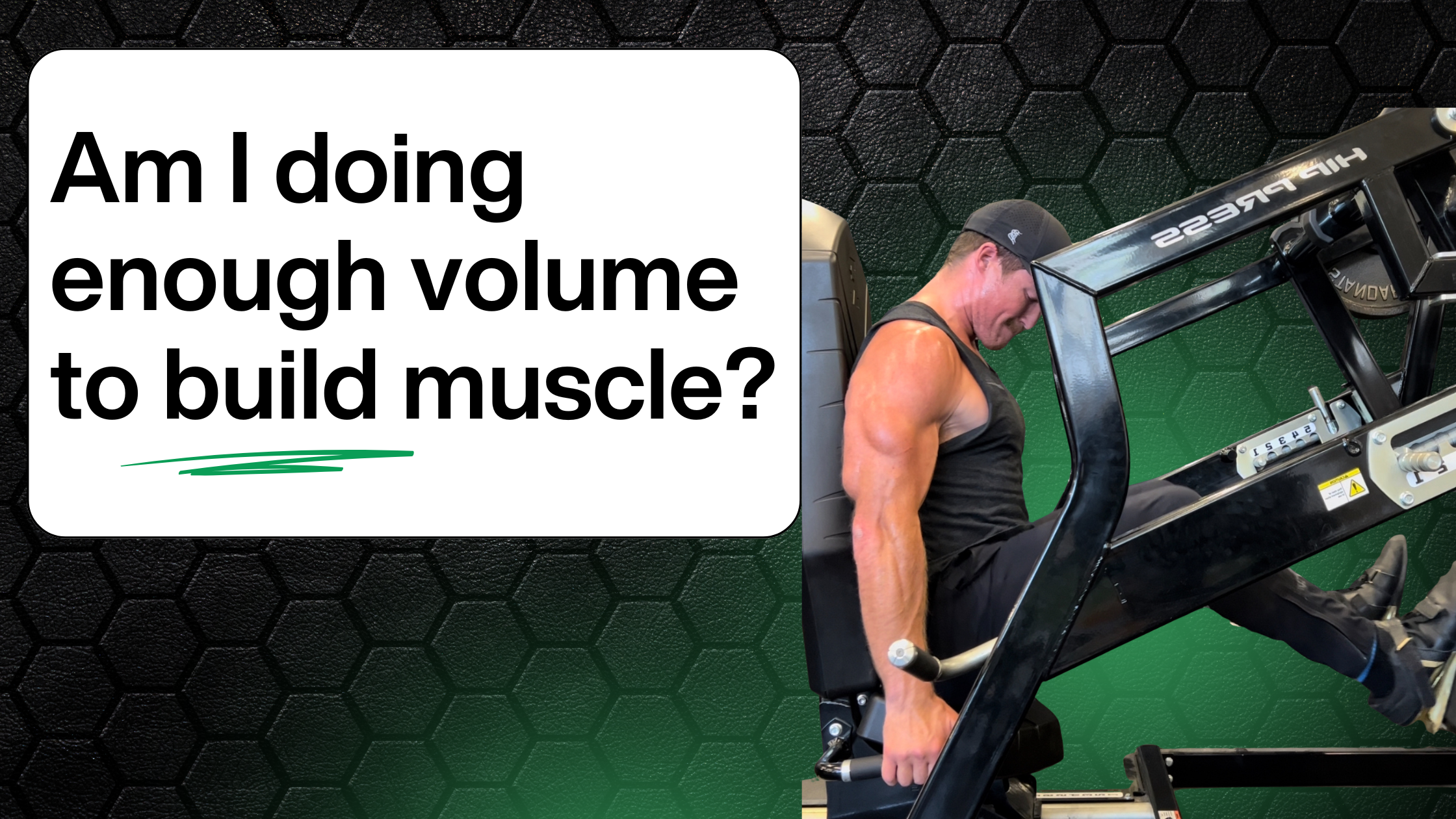Leg days got you limping?
We are back, and this week's edition of the Training Fix is all about knee pain, rest day diets, and muscle growth (or lack there of).
I had fun writing this one because these questions are ones that I personally have had to find solutions to as I find the answers are like hitting a moving target, and often the answer to the issue is "it depends".
But fear not, I put together some gems for you. I also added a funny poll at the end of the email that I would love your feedback to.
P.S. If you want to save more time in the gym and do programs that remove guesswork and optimize training outcomes, check out my training hub.
P.P.S. Read previous email versions here.
Are You Doing ENOUGH to Build Muscle?
The Problem: You’re training consistently but not seeing much size change, and you're not sure how much volume is actually needed.
Why it’s happening: Most people either undertrain major muscle groups or overdo junk sets with no structure or intensity. For most of my clients I try to program a minimum of 10 total work sets per week (assuming they are only doing twice per week) and work up to 15 total sets per week (if they are more committed or can handle the longer workouts).
The Fix: Aim for 10–20 hard sets per muscle group per week, depending on your level and goals. Split that across 2–3 sessions per muscle group for best recovery and output.
Recommended weekly targets:
Major Muscles (Chest, Back, Quads, Glutes, Hamstrings): 15–20 hard sets
Smaller Muscles (Biceps, Triceps, Delts, Calves): 10–15 hard sets
All sets should be within 1–2 reps of failure to count. Junk volume doesn’t build muscle, tension and intent do.
Example: Here's a video of me taking a client through a leg day. This is a good example of how hard to train, and what it takes each session to build muscle (this was one of his two leg days that week).
I get it, life and work is already full of crunching numbers, which is why I do this professionally for clients of all goals and levels. I LOVE coaching and nerding out about optimal training volumes and the nuances that come with training diverse population of individuals (all ages, abilities, goals, training backgrounds and experience).
To simplify all this one step further, I (1) can build 12-week custom workout templates for you, (2) be your personal coach and make monthly custom workouts for you, or (3) offer you a 10-week muscle growth plan you can do in any commercial gym!
Stop Cheating on Your Rest Day Diet
The Problem: You’re not training, but you’re still sore and unsure if you should eat less or just keep it the same.
Why it’s happening: Your body still needs nutrients for recovery, but you’re not burning as many fast carbs as on training days, so blindly eating the same thing can backfire.
The Fix: Keep protein the same (0.8–1g/lb of bodyweight), but scale calories back ~10-20% depending on how lean or active you are. Prioritize whole food meals, slow-digesting carbs, and healthy fats to stay satisfied and support recovery. I recommend you eat as you normally do, just skip the pre-workout meal (or intra-workout carbs) if you take them. Keep the protein in the diet though.
Example: Almost every workout I will have a protein bar and 1-2 pieces of fruit (bananas) before I lift. On rest days, I will often just not eat the bananas. The reality is on rest days most people's routine goes out the window, so I am actually a big fan of eating basically the same every day, especially if you are trying to lean out.
Take out the guesswork from your diet with either one of these diet app tools. The first is RP Diet App. I like it, and is great for those of you who really want to dial things in and are committed to tracking and sticking to the plan. It takes more effort, but the results are worth i.t
I also like MacroFactor App. It's more beginner friendly and still a great Ai-based diet app that I have actually done some testing with modelling the Ai algorithms during a fat loss phase.
Don’t Let Knee Pain Win
Ok, stay with me here, because this is a common problem but not a simple fix, so I want to be very thorough!
The Problem: Every time you squat or lunge, your knees flare up, so you skip leg day or power through the pain.
Why it’s happening: Most knee pain during leg training comes from poor movement patterns, too much forward knee travel, or skipping proper warm-ups.
The Fix: Yes, you can still train legs. Start first by determining if your issue is a loading issue (if so, use weight amounts that are pain free or under a 2 out of 10), movement issue (sometimes some exercises are more uncomfortable on the joints than others), or bigger issue (injury).
If you think it's because the last one, it's best to go see a qualified doctor to rule anything serious out (most of the time small discomfort is due to temporary inflammation or a tendonitis issue caused by the above reasons, which is often fixed by scaling back and meeting your body where it is at).
Start by warming up properly (see below). I then like to do more warm-up loaded sets, either with the exercise I plan to do with weight (that is pain free) or a leg extension and hamstring curl (even better, both). Do 2-3 sets, enough to feel the muscle firing (the first set may not feel amazing, but let the area warm up). Then, go into your main exercise (assuming it's pain free or less than 2 out of 10).
Control the load on the way down, and don't lose tension. You should feel the muscle being loaded and working. If you don't, slow down and go lighter (just light enough to control and feel the muscle doing the work, but not too light that it's not challenging).
Lastly, if you find you just can't figure out why the exercise you are doing hurt, then try another movement. Sometimes changing the movement makes all the difference. If you find squats hurt but front squats don't, great. If you find hack squats are pain free but step ups aren't, well then you are getting a diet of hack squats.
Example: I too struggle with knee pain time to time, and often it's because I train too aggressively (shame on me). While warming up and mobility routines won't protect you completely from training too hard too often, it can help you when you listen to the body and don't try to train like you did when you were 18! Ok, enough about my mess ups with my own workouts.. do as I say, not as I do.
I find that doing a squat warm up (like the video above for 5-10 minutes), and then doing a few slow, progressively heavier sets of leg extensions with an emphasis on fully straightening the knees and slowly lowering down goes a long way before I squat.
If you are still struggling, then maybe we should do a deeper dive on your training plan or form. I work with clients of all levels virtually (live training sessions, remote coaching) to fix these exact issues. Schedule an intro coaching call with me and let's get you back on the path to pain-free leg days.
Alright, that wraps up this week's Training Fix!
Thank you for reading and I hope you enjoyed this week's edition.
If you know a fellow lifter who needs help or would enjoy this, send them this email and have them sign up for the newsletter here.
- Mike (@mikejdewar)
P.S. Read previous email versions here
P.P.S. If you want to save more time in the gym and do programs that remove guesswork and optimize training outcomes, check out my training hub



